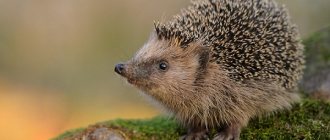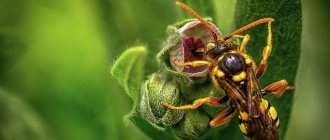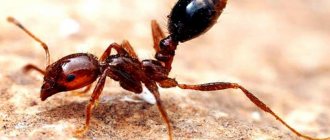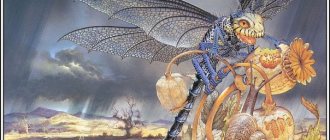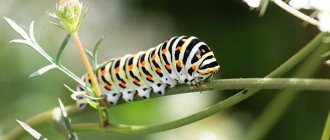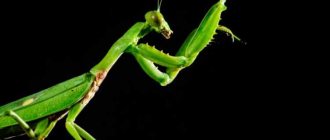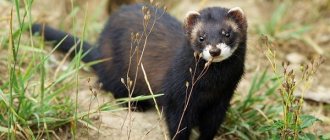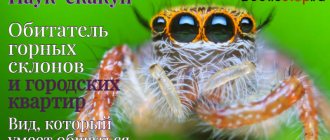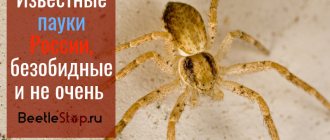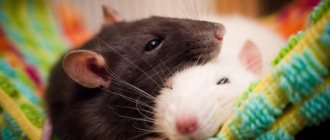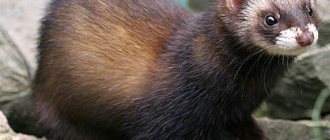You can easily find out what different types of wasps look like from biology textbooks and in other information publications, including on the Internet. Everyone knows the common wasp, because it differs from other insects in its yellow-black striped color, the presence of small mustaches and transparent wings. The common wasp often settles next to a person, on a personal plot or summer cottage. To do this, a colony of wasps builds their nests either in the ground, or in trees, or in the attics of outbuildings, etc. In fact, in nature there are many species of wasps that differ from each other both in body shape and in the characteristics of their life.
Anatomy of a wasp
Wasps belong to the Hymenoptera, which are the most numerous group of insects, including about 155 thousand species. A peculiarity of the body structure of these insects is that between the abdomen and the breast there is a thin membrane in the form of a stalk, which contributed to the emergence of such a thing as a “wasp waist”. The body of an insect consists of 3 parts - head, chest and abdomen. Despite the fact that all species differ in body color, colors such as black, yellow and orange are always present.
The structural feature of the wings can also be attributed to the distinctive feature of these insects. As a rule, the wings are quite thin and transparent, with clearly visible veins. The hind wings are somewhat shorter than the fore wings. They can shimmer in different colors, but can also be completely colorless. Each wasp leg consists of 5 segments. They perform various functions, including digging.
On the insect's head you can see whiskers of various shapes and lengths. The whiskers also perform various functions, including allowing the insect to navigate in space. The eyes are clearly expressed. Although the jaws do not have teeth, they are powerful enough to bite through the chitinous layer of the insect.
The wasp, like the bee, has a sting, which is located on the underside of the abdomen. As a rule, only females can sting. The sting is quite thin and is connected to a gland that produces poison of varying toxicity. With the help of poison, the wasp protects itself, its young, its nest, and so on.
Interesting fact! Males and females differ in size. As a rule, females are always larger than males. Females of some species of wasps reach a length of about 5.5 cm. These insects belong to the Scolia species and inhabit warm countries with a tropical climate. Some of the species can also be found on our territory.
In the photographs below you can take a closer look at what wasps look like. Wasp larvae are very different in appearance from adult individuals, since they are not pure white caterpillars. These are predatory caterpillars that feed on protein foods.
Life of a wasp. How a wasp builds a nest. Speed 1/12.
Benefit or harm
Wasps are predators.
Wasps are considered to be pests . Most likely, this reputation is deserved by its painful bites. They can live next to people and eat their sweet fruits. Another manifestation of the damage is that wasps can attack honey bees.
But despite everything, wasps also have useful properties. Some of them eat agricultural pests. They also act as pollinators, although not as well as bees. Recently, there is evidence that the venom of the Brazilian wasp is used in the treatment of oncology.
Types of wasps
These insects were divided into 2 large groups, according to the main classification.
Social wasps
Such insects are often called by different names, including paper insects. Social wasps live in colonies, which can number up to a million individuals. At the same time, they can build nests of various sizes, from the diameter of an apple to 60 cm in size. You can see this in the photographs.
In a large family, individuals are divided into castes, and they communicate using sounds and signals. The family is headed by the queen, who is engaged in reproducing offspring. There are species of wasps in the nest of which there may be several female queens who do not have the status of queen of the family, but are engaged in increasing the number of the aspen family.
Solitary wasps
This class of wasps is distinguished by the fact that each individual lives separately, so they do not build nests. As a rule, these are predatory insects. They lay their future offspring on the bodies of the larvae of various large insects. In this case, the larva develops independently, feeding on the flesh of the larvae. After destroying its victim, the larva pupates and waits for the arrival of spring. After wintering, with the arrival of real warmth, an adult wasp emerges from the pupa. Single wasps are quite poisonous, and their bite has been compared to piercing human skin with hot metal. Photos and names of wasps can be seen below in the text.
Interesting to know! Social wasps have several other names: wood wasps, paper wasps, etc. Solitary wasps are divided into species, which are named - sand, road, burrowing. Among all this diversity, there are species that are absolutely safe and useful, and there are parasitic wasps and killer wasps.
In our country, wasps can be found almost everywhere, and their variety is huge.
Fighting methods
To get rid of a wasp nest on a plot of land, it is filled with boiled water or doused with a flammable substance and set on fire. The procedure is performed late in the evening, when all family members are gathered and are going to spend the night, or early in the morning, when they have not yet had time to fly away.
When placing the hive under the roof of a house, in an attic, or in a tree, the nest is immersed in water. Fill the bucket, bring it carefully to the wasp’s nest, and immerse it in water. Another modern way to get rid of pests is using a vacuum cleaner. They pull the insects into the bag at full speed, then throw them into the water.
To prevent the construction of nests, repellent plants are planted on the land - mint, lemon balm, marigolds, calendula. The walls are treated with an insecticidal substance, paint, varnish, and boric acid solution.
Lifespan of wasps
Different species also differ from each other in that their life expectancy is different. In addition, male wasps live less than female wasps, since they perform the function of fertilization. After mating, the male dies after some time. Its lifespan is no more than 2 weeks.
Females who reproduce are called queens or queens. They also look for a place for their nest, after which they reproduce. The queen of ordinary wasps lives no more than a year and dies when real cold sets in. Young females, ready to reproduce, wait out the cold in the wood, and with the onset of spring they set off on a journey to find a place for their nest. Other species of wasps that inhabit the planet in warmer climatic zones can live for several years.
Interesting Facts! Most of the aspen family are females who are not ready to mate. Therefore, they perform functions related to building a nest, searching for food to feed the larvae, protecting the nest, etc. The lifespan of such individuals is about 2 months.
Composition, release form
The high effectiveness of the drug is ensured by several active components at once - cypermethrin, bioallethrin. Mosquitol contains their concentration of 0.2% for each. The action of Mosquitol is enhanced by the synergist. Insecticidal substances are used for the manufacture of professional preparations due to their rapid action and relative safety.
The aerosol is sold in yellow-black cans in a 500 ml container. The product is ready for use and does not require special preparatory procedures. Before using Mosquitol, simply remove the protective membrane and shake the can well.
Reproduction of wasps
Different types of wasps reproduce in different ways: some of them lay eggs in individual honeycombs, like bees, and others in the bodies of their potential victims, whom they drag into their burrows located deep in the ground.
Reproduction of social wasps
The queen lays eggs in separate combs and, at the initial stages, takes care of the future offspring independently, obtaining food for them. As soon as the first generation of worker wasps is born, they immediately begin to take care of the nest, as well as the larvae.
After laying the eggs, after a few days, larvae similar to worms emerge from them. The larvae grow quickly, as the adults bring beetles, spiders, flies, larvae of other insects, as well as pieces of meat for them. Over the course of 2 weeks, the larva manages to molt several times, while it noticeably increases in size and finally turns into a pupa. A young wasp emerges and gnaws the cocoon on its own. All this takes almost 3 weeks. Wasps are most active in the summer.
Reproduction of single wasps
Single wasps do not reproduce at the same rate, because to do this they need to find a victim, dig a hole and drag the paralyzed insect into this hole. The wasp lays an egg on the body of the paralyzed victim, climbs out of the hole and buries the hole. At the same time, for each larva it needs to paralyze a potential victim and dig a hole. This doesn't take much time. The larva feeds on the flesh of the victim and then pupates. In the pupal state, it remains in the ground all winter. Such wasps live no more than six months.
Wasp's Diary - 06/15/2012
Building a wasp colony
The construction of an aspen colony begins in the spring. The female, fertilized in the fall, comes out of hibernation and alone builds a nest and lays eggs.
Queen builds a nest
After 5-6 days, the eggs hatch into larvae, which grow for about another 20 days, feeding on what the mother brings them. After this time, the larvae pupate and weave the entrance to the cells with a web. After another 20 days, the pupae turn into adult wasps. Interestingly, all wasps born are females.
. They are not able to procreate due to underdeveloped ovaries, and their main task is to take care of the home, future offspring and food. From the moment adult wasps appear in the colony, the queen transfers all her responsibilities to them and is only involved in laying eggs. Thus, by autumn the colony may number hundreds or even thousands of individuals, the vast majority of which will be working females.
The first males and fertile females appear closer to autumn. They remain in the nest for some time and, having grown stronger, fly off on a mating flight. Actually, the only task of males is to mate with future queens, and after completing the mission, the males die. By autumn, the rest of the colony also dies, and fertilized females hibernate in order to found their new colony in the spring.
After reading the above information, you probably wondered: “How does the queen lay eggs without males?” Everything is very simple, fertilization of females occurs in the fall, after which they hibernate. Despite this, the sperm of males obtained during mating is stored in the body of females for many months, and is used a little at a time when laying new eggs. It is also interesting that the queen is able to plan in advance the sex of future offspring, which explains the fact that males appear only in the fall.
Where are wasps found?
Species of wasps that live in families build nests consisting of individual elements called honeycombs. Insects build their nests not far from places where there is a lot of building material and food. Often, abandoned nests, rodent holes, tree hollows, etc. serve as such places for this. It is not so rare for wasps to appear on garden plots or summer cottages, in various outbuildings, in the attics of houses, on balconies, etc. Here they live and raise their offspring throughout the summer, and with the arrival of autumn they leave the nest. Only young, fertilized females survive and find refuge in various places.
Solitary wasps are found exclusively among wildlife. At night, they can be on the stems of various plants, holding onto them with their paws and jaws. They can climb into a flower. These insects behave like nomads, constantly changing their location.
Construction material
The finished wasp nest is nothing short of impressive. From the outside it looks like a smooth, oval-shaped egg. Inside, numerous honeycombs are found, arranged in a certain way. The building material resembles ancient parchment. Mostly gray, brownish in color. Because of the way wasps build their nests, they are called paper wasps. The family is one of the most numerous and includes species and subspecies.
What wasps make nests from and how building materials are obtained also deserves respect. The insect lands on wood, spits out a certain amount of its own secretion, under the influence of which the upper tissues of the tree bark liquefy. The wasp grabs the top layer with its powerful jaws and pulls it towards itself, as if scraping it off. When she has the amount she needs, she goes to a place where other relatives are making a hive.
Having arrived at the right place, the wasp once again carefully chews the building material with its jaws. Under the influence of saliva, the wood becomes sticky, stringy, gray or brown, depending on what tree it was extracted from. The wasp spits the finished building material onto the already formed honeycombs, again stretches it with its jaws, giving its structure an oval shape. This is how a new thin partition appears.
Interesting facts from the life of wasps
Only a few specialists study the life functions of wasps. Thanks to them, a person can learn a lot of interesting things about these amazing creatures. For example:
- Baby wasps are a species of common wasps that live in families. The female grows up to 2 cm in length, and all other representatives of this species grow up to 1.8 cm.
- Tree wasps are distinguished by the fact that they have a predominant bright black and orange body color. Depending on the species, their size can range from 1 to 6 cm. The hornet also belongs to this family and is distinguished by its rather impressive dimensions. It is considered one of the most dangerous insects. The wasp synodica is also a tree wasp, but little is known about it.
- Asian hornets inhabit mainly China and Japan, where up to 50 people die from their stings every year, according to official data. The size of the insect is up to 5.6 cm. Its bite is enough to kill a person, especially an allergic person.
- Large spotted scolia are considered the most beautiful representatives of the wasp species. The female grows up to 5.5 cm in length, and the male - up to 3.2 cm. Scolia lay eggs on the body of cockchafers or rhinoceros beetles. They differ in that they live separately. It is considered a safe insect for humans, despite its impressive size. The result of a bite is a simple numbness of the bite site.
- Germans, no more than 3 cm in size. Females do not have wings and look like large ants. The female individual has quite bright colors, compared to the male representatives, who have more brown tones. They do not build their own nests, choosing hives of bees or nests of other wasps for their livelihoods.
There are a huge number of species of Hymenoptera on the planet, and each species has its own unique characteristics.
Features of existence
The lifestyle of the wasp will be directly related to its species. If we talk about solitary insects, they are only engaged in preparing paralyzed prey for their future offspring. Subsequently, the larvae develop independently and representatives of only some species can occasionally feed young individuals.
As for the life of social wasps, it is much more eventful and complex for them. The queen spends the winter in warm shelters and with the arrival of spring warmth she goes in search of a place to create a nest. She lays eggs in it and takes care of the younger generation. Subsequently, the wasps from the first brood become workers and take over all responsibilities for building the nest and obtaining food. The founder stops active work and lives only by increasing the number of the colony. The subsequent wasps, both female and male, are sterile. And only in the month of August the queen will lay eggs, from which individuals capable of procreation will emerge. In the fall they will begin to mate, after which they will leave their native nest. The males and queen will die before the start of winter, and the fertilized females will find warm shelters for wintering and in the spring they will become the founders of new colonies.
Do wasps sleep at night? Many people believe that these insects go to sleep at night. However, this assumption can cause quite serious harm. Based on this statement, people in whose houses striped insects have built their nests try to get rid of them at night.
However, wasps never sleep! At night, their activity only decreases and at the same time they almost never leave the confines of their nest. The wasps remain awake throughout the night, passing the time by chewing the bark collected during the day, from which they will begin to build new honeycombs in the morning.
Natural enemies of wasps
Nature is designed in such a way that every living creature on the planet has its own natural enemies. Wasps are no exception, despite the fact that they are armed with a poisonous sting. For example:
- The nests of wasps that are left without a queen are actively destroyed by ants, destroying weak or sick individuals.
- The wasps are preyed upon by the paradoxical fantail, which sneaks into the wasp nest and lays eggs. The larvae of this insect parasitize young wasps.
- Hornets are the most dangerous and formidable enemies of wasp families. In one attack, hornets are capable of destroying an entire family of wasps, since they have an advantage in size and also in numbers.
- Wasps are also hunted by honey-buzzard birds, which feed the chicks with larvae and adults.
With the arrival of autumn, when the air temperature drops noticeably, wasps become less active, so they become victims of some insects and birds.
It is difficult to meet a person who has not encountered wasps in his life: they are everywhere. They can be found both in small villages and in megacities. You can even say this: where there is a person, there are wasps, since next to a person this insect can always find food for itself.
wasps conquered, how did I get rid of them
Character and lifestyle
The character of striped predators is quite bad, that is, frankly aggressive. At the slightest disturbance, this insect attacks first. The wasp not only stings, but also bites the enemy, although bites with the mouth are much less noticeable than working with a stinger.
If there is another wasp nearby, sensing the smell of poison, it will rush to help the attacking wasp. And woe betide the one who disturbs the hornet’s nest. Then a whole cloud of wasps will fly out to protect their home and the culprit will be very unlucky.
At the same time, wasps are very caring nannies and mothers, although this applies mainly only to social wasps; in solitary wasps, the mother’s care is expressed only in providing the larva with paralyzed prey - they provide their larvae with food for a long time during their development. In social wasps, caring for their offspring is much more difficult.
Each wasp in the family goes through all the “working” stages. If at first a young individual can only be a cleaner, then with age she is “promoted” to the rank of wet nurse.
Wasps find their nest unerringly, even when they fly many kilometers away from it. But if the nest is moved even a few meters, finding its home will be a very difficult task for this insect.
Lifestyle
The behavior, habits, and disposition of the warrior wasp are at the stage of study, but the main points from the life of the insect are already known. Refers to solitary wasps. Leads a primitive lifestyle. The whole mission is to mate and lay eggs. The female does not take part in feeding the larvae, but provides food for the entire development phase.
To lay eggs, the warrior wasp looks for large insects and their eggs. In search of larvae, it burrows underground, looks for a potential victim, and paralyzes it with poison. It drags it into a hole prepared in advance for the future larva and lays an egg on its abdomen. After a few days the larva appears. It digs into the victim's body and begins to slowly eat as it grows.
The larva leaves vital organs and systems for last; thanks to this selective feeding, the victim remains alive and fresh longer. At the end of its development cycle, it leaves the victim or all that is left of it, pupates. The imago emerges from the pupa. A separate burrow is built for each egg, and an individual victim is found.
Wasp Megalara garuda
Nest
Wood wasps live in the wild in broad-leaved forests, but are not averse to settling near a person’s house. The spherical nest in the form of a cocoon is attached to wooden buildings, trees, shrubs, and less often it is built in the ground. The average size of a wasp's house is no larger than that of an ordinary apple. Several dozen worker wasps live inside. In some cases, the family numbers hundreds of individuals; the nest size reaches 30 cm in diameter.
Human possessions entice forest wasps with an abundance of food, the absence of enemies, and many convenient places to build a nest.
- attic;
- roof;
- balcony;
- outbuildings;
- garden;
- vineyard;
- apiary;
- garages;
- walls with cracks.
Wood wasp nest
Peculiarities
The sizes of adult individuals range from 2 millimeters to 4 or more centimeters. The abdomen is elongated, in females it has a long ovipositor (sometimes up to 17 centimeters). The head antennae are also elongated. The wings of most representatives are well developed.
After mating, females lay eggs directly on the body of the future host. Sometimes in the body or near the prey insect. Some larvae are selective in choosing a host, while others parasitize various insects. The death of the host occurs before pupation, less often after spring awakening. The rider injects special viruses into the victim’s body to subdue the immune system. And at the same time he diligently provides himself with fresh food.
The viability of the host is preserved, even if only a tenth of the mass of its internal organs remains intact.
Food includes caterpillars, beetles, ants, and wasps. Less common are spiders and scorpions. There are species that parasitize tahini flies. This is the so-called secondary parasitism.
Adult equestrians are active at night and are very sensitive to air humidity. They prefer to settle near bodies of water. Here they can be found on flowering herbs. The population increases sharply during rainy summers.
The average lifespan of adults is from three to ten months (in the case of wintering in the adult stage).
